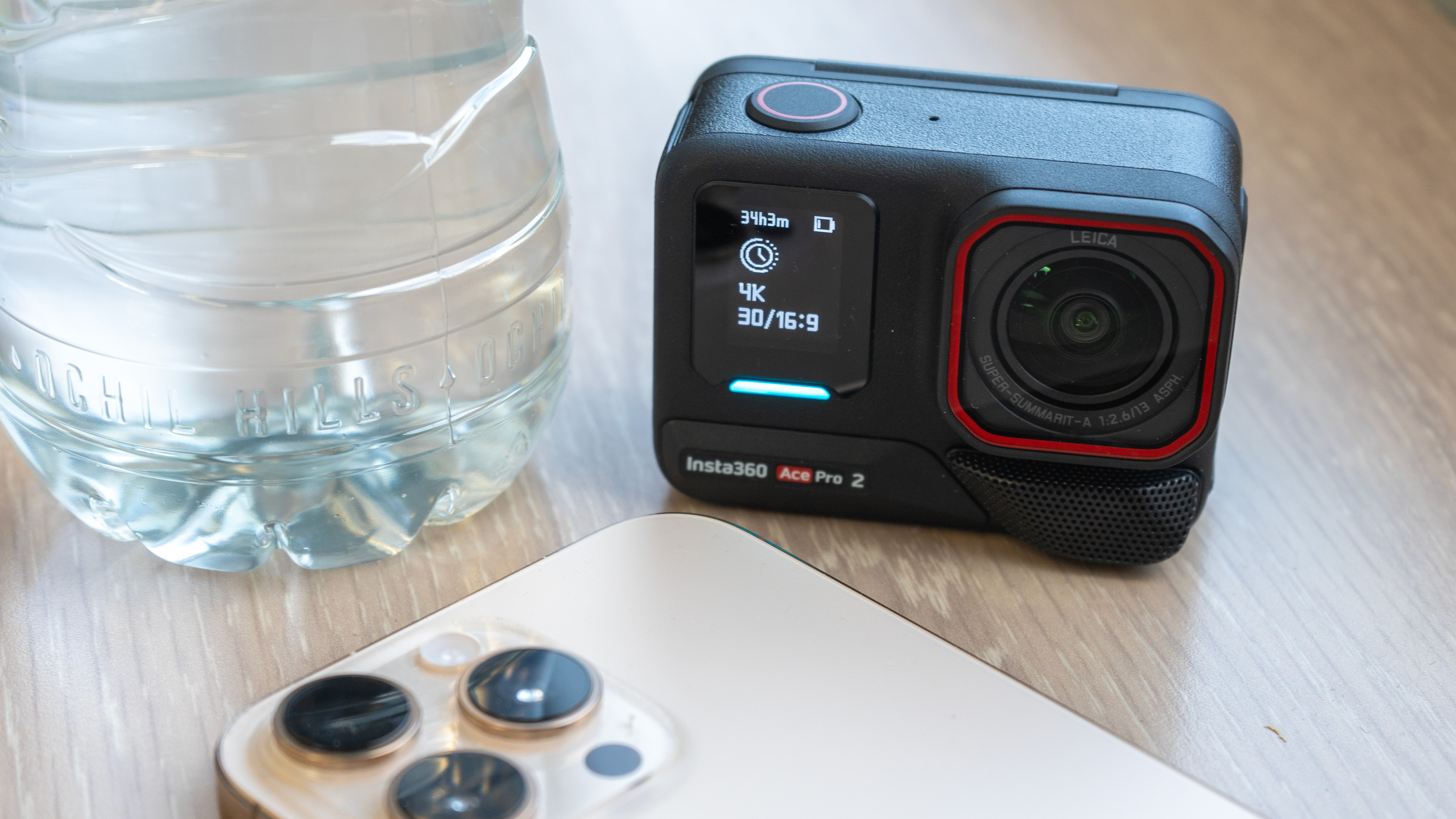
Action cameras have been getting into a bit of a rut. The GoPro came out and then, well, if we're honest, things took their natural course for quite a long time. There were slight improvements, but not that much happened.
In the last couple of years, though, Insta360 have been the thorn in GoPro's side that have changed how people record action. In large part that's because of their firmly establishing themselves at the top of the best 360-degree camera league and giving people an alternative way to capture action. One GoPro had thought they might own.
All that time Insta360 have also been gunning for the 'traditional' action camera, but – unlike DJI, who seem to have concentrated on pure quality – Insta360 have been prepared to deviate from the established form. The result was the original Ace Pro last year; with the ability to record 8K video, the word Leica written on the front, and an image sensor big enough to cope with low-light
The Ace Pro 2 is a refinement of that with all the upgrades that you might expect in 2024; there is an AI co-processor. There are subtle improvements to the body to address criticisms.
Insta360 Ace Pro 2: Specifications
Insta360 Ace Pro 2: Pricing
With a launch price of $399 for the single battery bundle, this is a premium action camera. That's on a par with the GoPro Hero 13 Pro, and $50 more than the Osmo Action 5 Pro – it's two most obvious competitors – although the $419 price for a dual battery bundle seems like a sensible deal. Why do the others push you to three batteries?
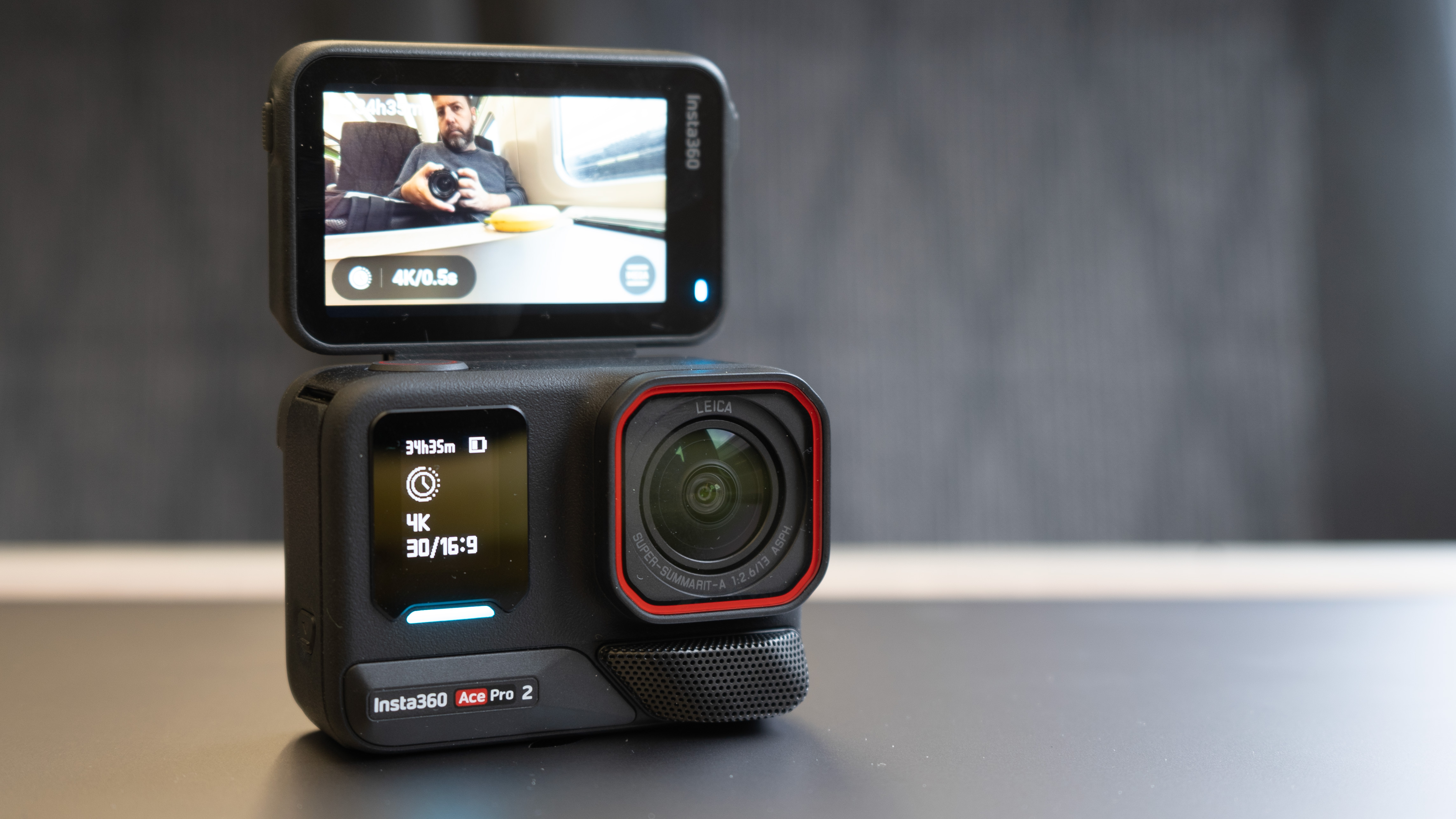
Insta360 Ace Pro 2: Build and Handling
Because it is fractionally bigger and fractionally heavier than other action cameras, the Ace Pro 2 feels immediately robust in the hand. Pleasingly there is nothing to challenge that positive first impression as you scratch below the surface (or, perhaps I should say, it's just the right amount of hard to get under the surface and cause any harm.
If you're only used to GoPro or Osmo Action-like cameras, the design is curious. You can, for example, flip the screen up to its full 180-degree position then apply a surprising amount of force to the back without any sign that the camera is about to give way or fail. In the promotional materials, Insta360 Pro show the camera mounted to cycle handlebars with the screen angled for easier viewing from the rider's perspective. That's pretty cool (ignoring the potential for distraction).
The doors which enclose the battery (on one side) and the USB-C socket and MicroSD card (the opposite end) also stay in place reassuringly. On the Ace Pro (1) – admittedly when I was trying an early camera – this wasn't quite my experience with the smaller door, so this was something I tested straight away!
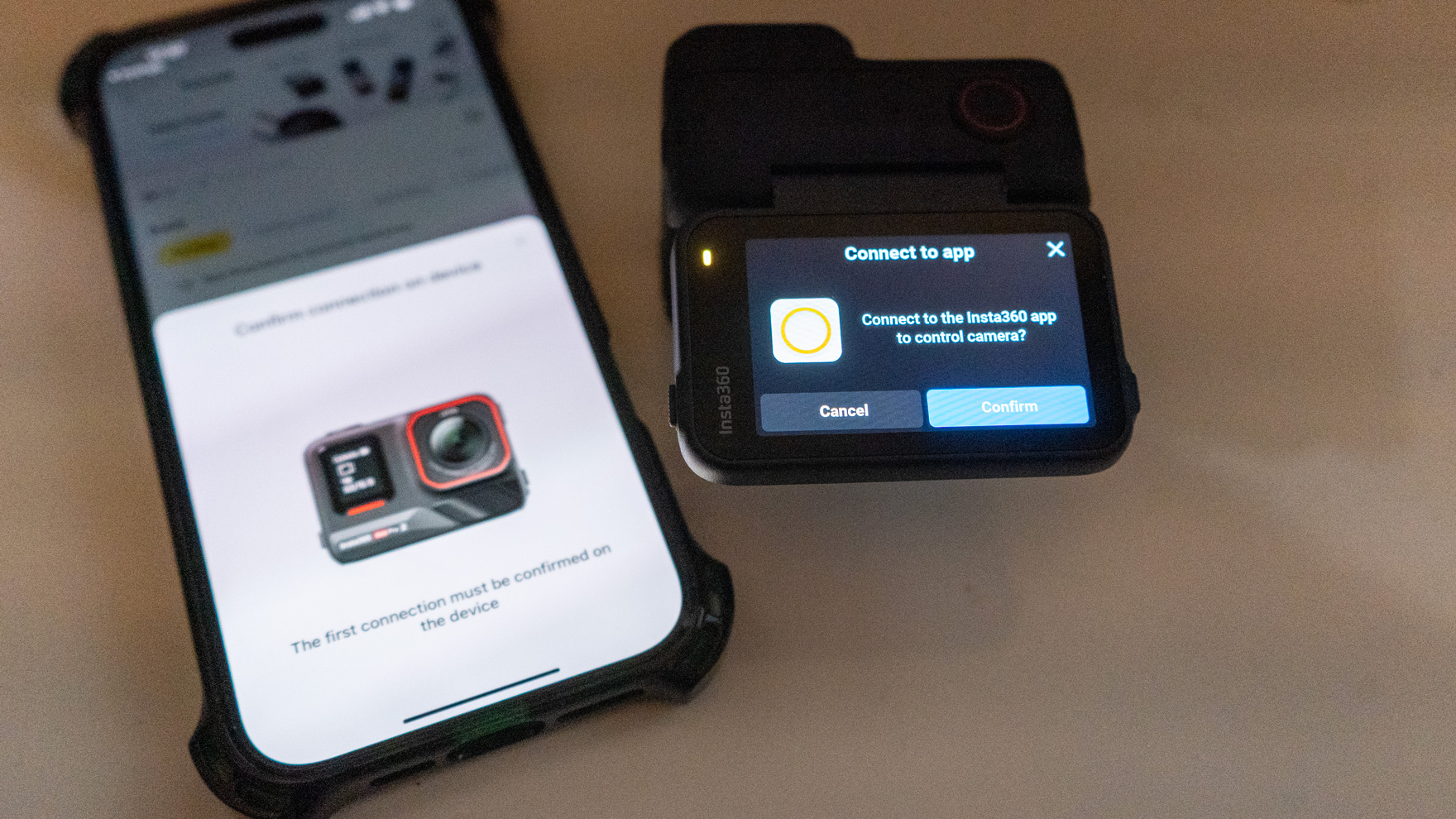
Some things about the Ace Pro 2 are a little bit 'traditionalist' – you need to record onto a MicroSD card (also true of the GoPro, but DJI also give you a good few GB of internal storage atop the storage card slot).
It can, however, be controlled remotely via the app and send images that way and Insta360's app is well realised. (Insta360 own the best 360-degree cameras, a software-intensive area, and it clearly rubs off a bit). This makes file transfers painless on the go.
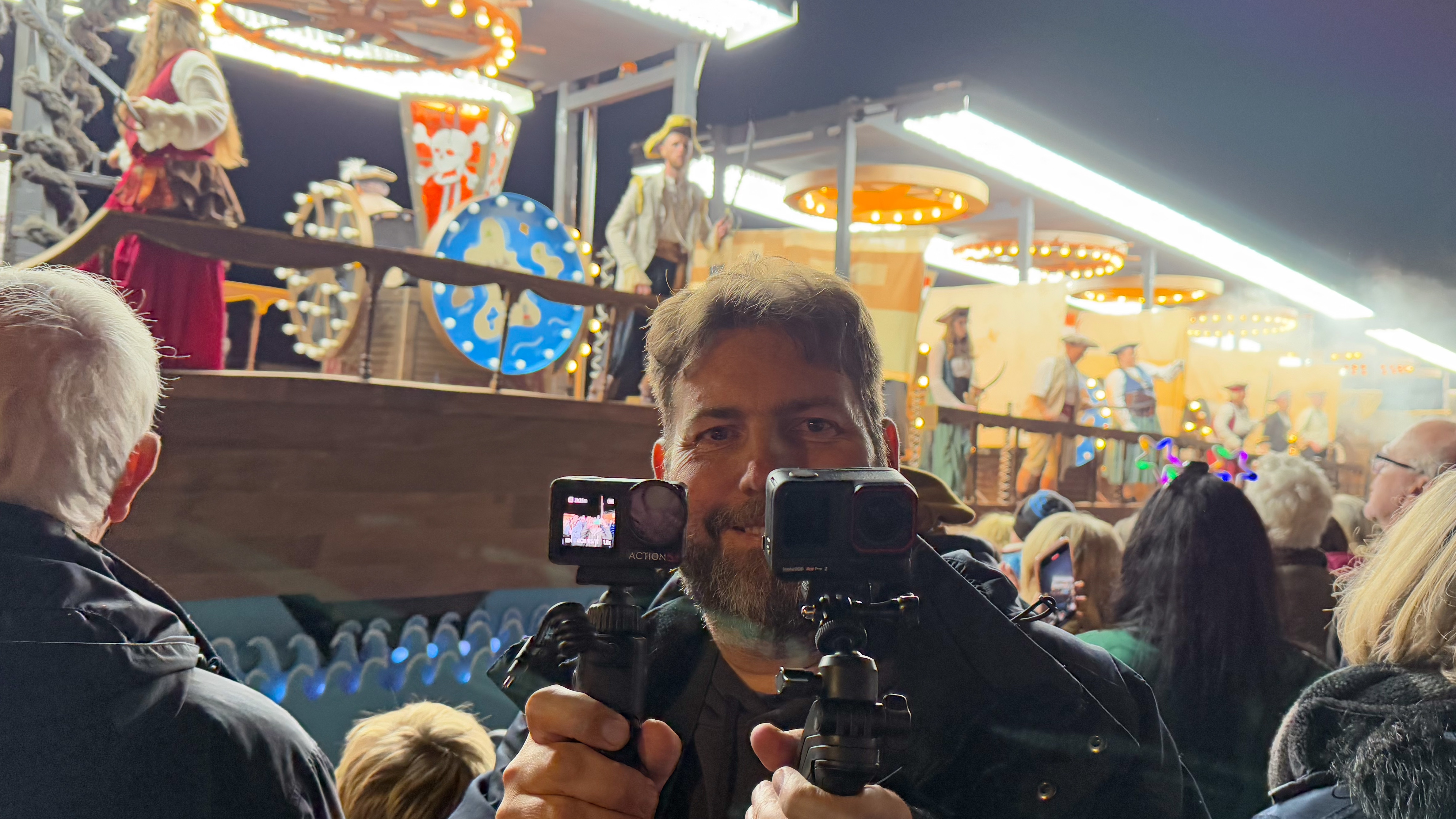
One of the things I found over my extended testing period is how useful the fold-out screen can be in a lot of situations. I was out in a slightly unfamiliar environment the other day – trying to grab a TikTok video (give us a follow!) as I tested a drone – and because I'd not got as much memory in my camera as needed, it was dead easy to just use this action camera and my DJI Mic to record what I needed. Easier, in fact, than my old Sony A7 III because that camera doesn't have a vlogger-friendly screen.
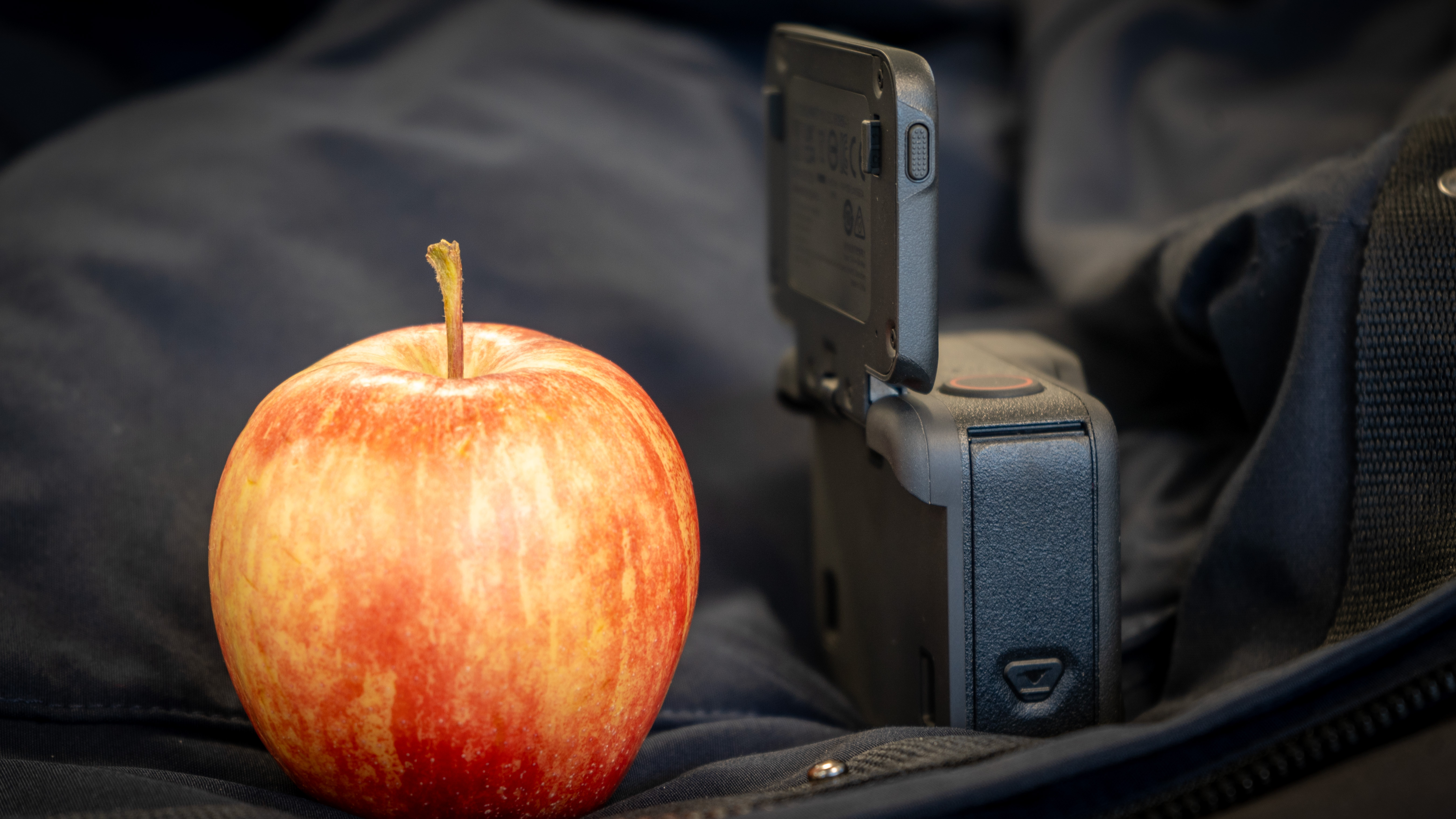
Insta360 Ace Pro 2: Performance
First and foremost, this is a very good camera, and a marked improvement on its predecessor. Even in simple matters like turning on and menu navigation, the increased power is apparent, something I noticed a lot in operation. The thing is, using the Ace Pro is less familiar than GoPro or DJI for me because, well, the others have been around longer, but I didn't feel I had any trouble navigating the menus; there was no frustration in delay nor did I find information lacking on the screen.
The quality from the camera is pretty spectacular, but the impression I get when shooting in the auto settings is that Insta360 tends to push a little more toward saturated results than some of the competing cameras, especially the DJI Action 5 Pro. GoPro, historically, has also been keen on saturation, so it makes sense that they'd choose that route!
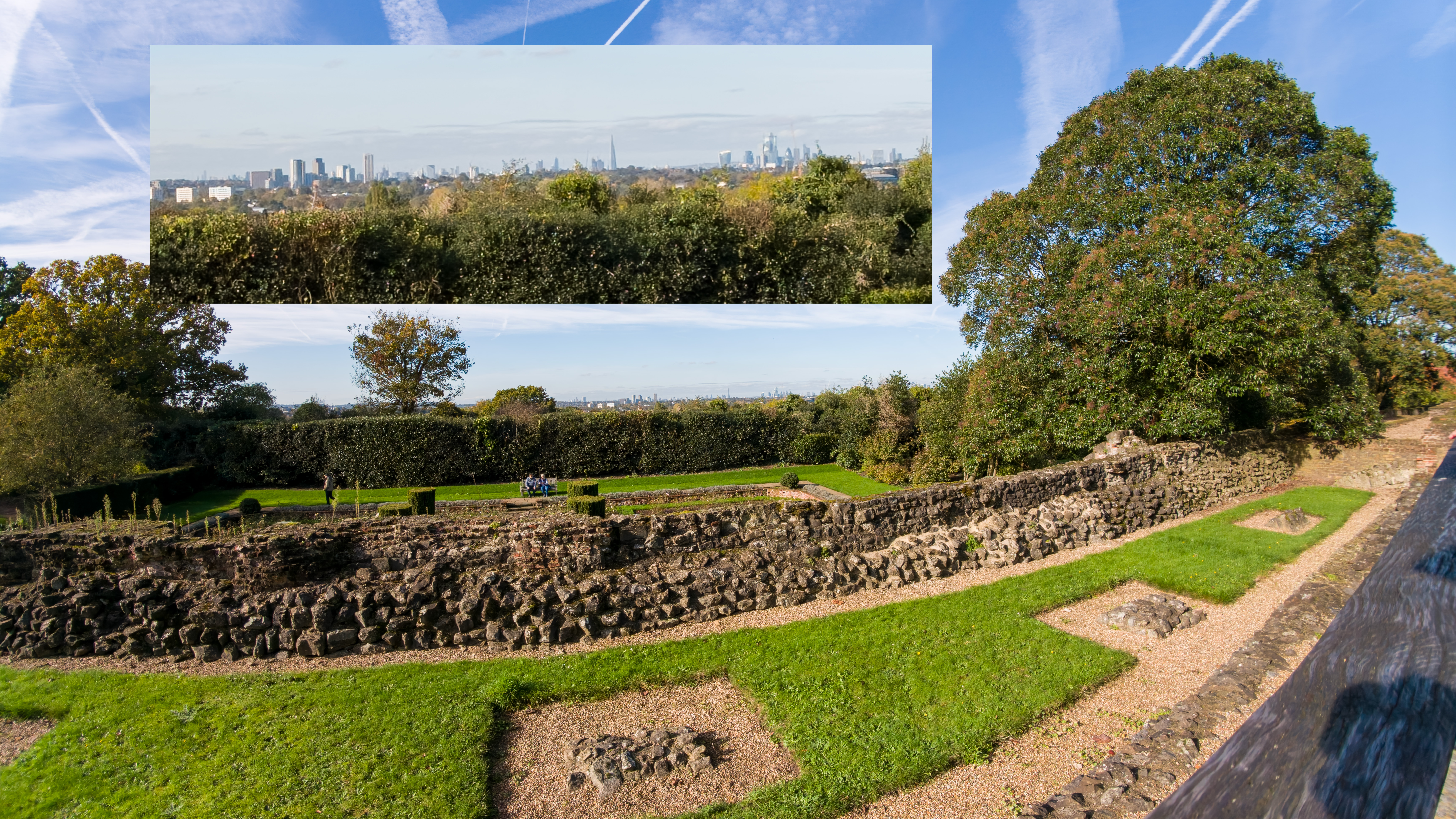
I shot a series of sample images with the camera's I'll upload soon which show the camera in different settings, but the result was always impressive sharpness and a good dynamic range. I was even able to capture images inside an old-fashioned window in which there was detail in the both the framing and the world outside on a bright day.
The system isn't faultless, of course, and you can judge from yourself from the sample clips how it handles the switch in conditions, but in general I found little to complain about.

Insta360 Ace Pro 2: Sample Clips
Series of samples taken with the Ace Pro 2, showing 4K 60fps shooting, assorted 120fps and 240fps slow-mo, walking into the dark, the 2.35:1 8K mode (handheld), Super Night, me using the camera to shoot a 'short', and DashCam mode:
One slightly niche issue, with my test camera at least, was that it didn't handle the lights of Bridgwater Carnival quite as well as the DJI Action 5 Pro – when shooting in the new 'PureVideo' mode. That said, this isn't an entirely fair test as I left the DJI in it's default mode, not 'SuperNight' which might have suffered from the same issues.
Anyway, my feeling is that the feature tried a bit too hard and as a result, where there was light, ended up pushing the colors too far. It's probably more sensible to look at the darker areas, where – to be fair – the Ace Pro 2 does a pretty special job of finding detail where the DJI Action 5 Pro's standard settings don't bother.
Insta360 Ace Pro2: Overall verdict
My experience with the Ace Pro 2 has been very positive. I've kept this camera around for longer than I'd planned, and so used it for more things, and – despite the saying – familiarity has definitely NOT bred contempt.
My first thought was that it was still just a bit too big, but over time I realised that a few extra mm don't matter for much, and that the occasions Insta360 suggest a tiltable screen is helpful in some of their marketing aren't far from the truth; handle-bar mounts etc. On balance, I think I prefer it to the in-body screen for talking-to-camera shots as I can line up a picture more reliably from a distance, then just talk to the lens.
I also really liked the ability to select and shoot 8K 2.35:1. Sure, it's just a crop, and not an anamorphic lens, but it still looks pretty cinematic!
There are a few things about it that disappoint me. Personally I'd like slightly more subtle tones (but I think much of the world is against me there) and it seems a shame 10-bit color isn't on offer. Though it seems early to say it should be standard, I'd also like to have seen built-in storage (as well as, not instead of the MicroSD card slot) at this price.
Ultimately, though, for most people, this is a choice; for size and 10-bit DJI still has the edge, but for vloggers and others intent on composing their shots, or getting high-res stills, the Ace Pro 2 seems the natural design preference, and the quality is impressive.
Alternatives
How I tested the Ace Pro 2
Essentially I made this my 'go to action camera' for a few weeks, as well as running some side-by-side tests with the best action camera of the moment (and certainly the obvious competitor), the DJI Action 5 Pro. I kept it in the back of the car or my pocket, and just used it as the need occurred. Also, obviously, I've deliberately taken it to locations where it can show of it's features (low light, water etc.)
In general, in my years of experience, I've found that the best way to test action cameras is to use them 'in real life' for their intended purpose – at least one of which is being a camera you can put in places you wouldn't put your phone! Finally I also gave the camera to my 8-year-old to try to get his opinion on ease of use.







